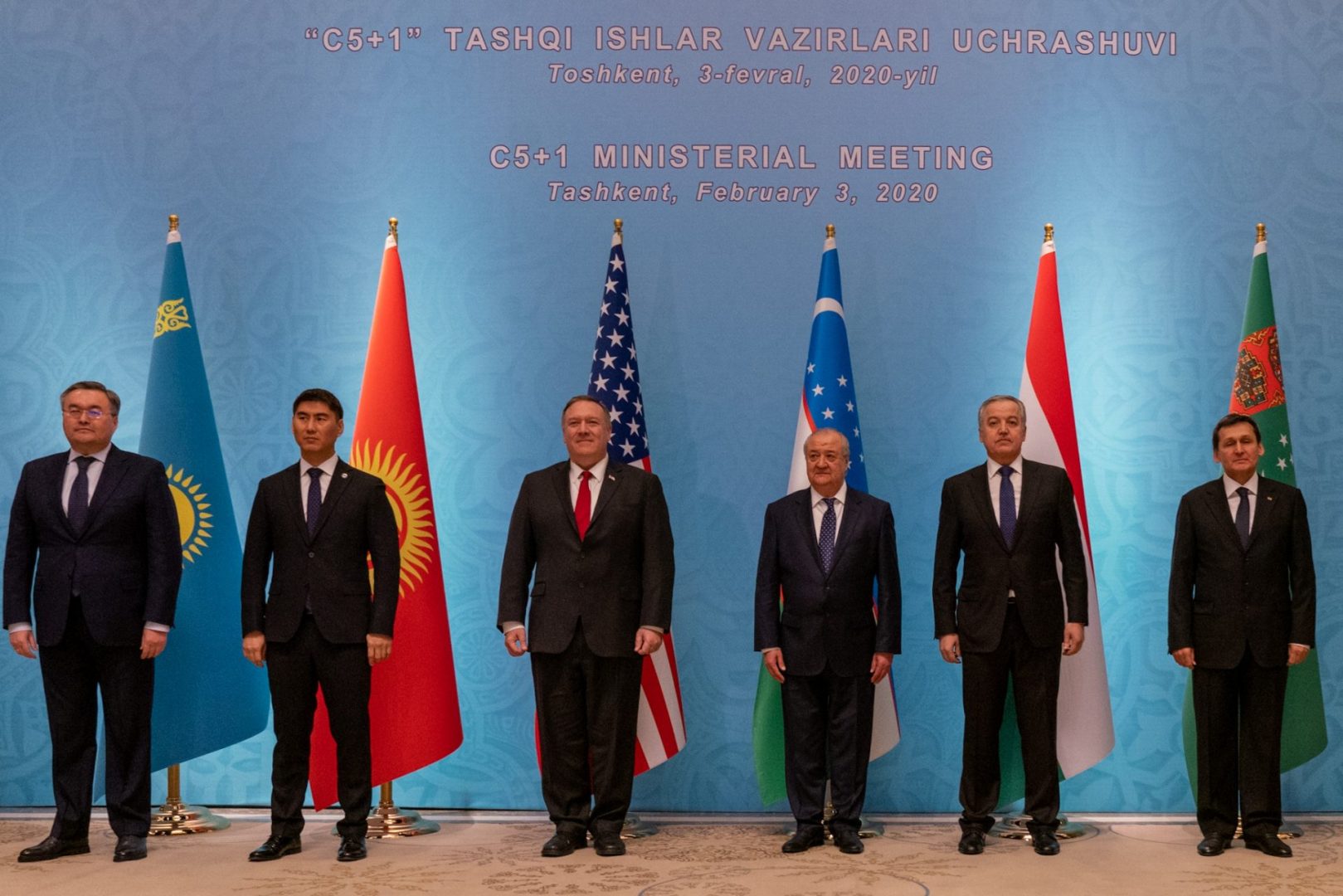
The State Department released its updated strategy for Central Asia last month, a relatively short document that is mostly taken up with reiterating traditional U.S. priorities in the region.
While it lacks the grand ambitions that fuelled earlier U.S. approaches to Central Asia, particularly the aim to reshape its strategic geography through U.S. backed infrastructure initiatives, the Trump administration’s new approach isn’t without its own ambitions.
Given the past gap between aims and results in U.S. policy toward Central Asia, more realism about American capabilities might be welcome. But the policy outlined by the Trump administration is still problematic.
It is based on simplistic assumptions about geopolitical competition and an overly optimistic view of American influence. Although it lacks any new regional vision and mainly focuses on “a peace process that will end the conflict in Afghanistan,” the new strategy implies that the U.S. will still retain leverage, and interest, in Central Asia once U.S. forces leave.
More problematically, it views the region through the lens of zero-sum competition with neighbouring Iran, Russia and, especially, China.
While previous administrations in Washington understood that U.S. interests in Central Asia did not always overlap with those of Beijing, Moscow and Tehran, they remained open to cooperation, and were careful to avoid presenting countries like Tajikistan and Uzbekistan with a binary choice.
The Trump administration, by contrast, seems to be betting that it can convince Central Asians to embrace the logic of competition. Leaders across Central Asia, however, are unlikely to line up behind those calls, especially as the Trump administration is working to end U.S. involvement in Afghanistan, long a key driver of American engagement with the region.
The new strategy lists six U.S. objectives: supporting Central Asia’s sovereignty and independence, reducing the threat of terrorism, supporting stability in Afghanistan, encouraging Central Asia-Afghanistan connectivity, promoting the rule of law and human rights, and increasing U.S. investment.
Most of these are echoes of previous administrations. The Trump administration seems content to maintain existing initiatives, rather than build on them from the Obama administration’s support for bolstering connectivity between Afghanistan and Central Asia, through initiatives like the CASA-1000 electricity grid that would export hydroelectricity from Kyrgyzstan and Tajikistan to Afghanistan, to ongoing steps to help Central Asian states secure their borders and counter violent extremism.
Previous administrations emphasised connectivity to bolster economic development and strengthen Central Asia’s independence from its larger neighbours, though U.S. ambitions tended to outstrip resources.
The Clinton administration, for example, focused on energy in the Caspian Sea, hoping that new oil and gas resources would provide oil- and gas-rich Kazakhstan and Turkmenistan a source of revenue, while new pipelines to Europe would accelerate their economic and political decoupling from Russia.
Yet three decades later, zero pipelines link Central Asia to Europe, though Kazakhstan ships some oil by tanker. Instead, pipelines from Central Asia to China have been instrumental in reducing the region’s dependence on Russia; Turkmenistan in particular has traded dependence on Moscow for dependence on Beijing.
Similarly, the Obama administration promoted connectivity between Central Asia & South Asia in part to compete with existing links to Russia. Its central accomplishment in the region was the Northern Distribution Network, a multilateral initiative to establish new transit routes to Afghanistan, in order to promote regional economic integration and strengthen the legitimate Afghan economy.
The administration pursued other projects as part the ambitious New Silk Road Initiative, unveiled by then-Secretary of State Hillary Clinton in July 2011, which aimed to link Central Asia and the Indian subcontinent with new rail lines, highways and energy infrastructure.
It included U.S.-backed infrastructure projects like the TAPI pipeline that would take natural gas from Turkmenistan to India via Afghanistan and Pakistan, as well as the CASA-1000 energy grid and another transnational electricity project known as TUTAP.
Yet TAPI stalled because companies were wary of the risks involved, while projects backed by international financial institutions suffered from political infighting, protests and questions about profitability. After long delays, CASA-1000 finally broke ground in early February.
Meanwhile, Chinese President Xi Jinping’s 2013 announcement in Kazakhstan of the huge Belt & Road Initiative overshadowed anything the U.S. could do in the region.
Beijing’s vastly larger commitment of financial and other resources to build a wide range of infrastructure projects reflects the reality that Central Asia remains a much higher priority for neighbouring China than for the distant United States. That history suggests that the Trump administration’s decision to downplay connectivity is not necessarily a mistake.
Leaders across Central Asia are unlikely to line up behind the Trump administration’s call to embrace the logic of competition with Iran, Russia and China.
Still, the absence of a more compelling vision for the region leaves Washington with few options for balancing the growing influence of China.
The inability to offer an alternative or supplement to China’s Belt & Road Initiative is especially problematic because of the importance the Trump administration has placed on containing Chinese influence in Central Asia.
Indeed, the most fundamental way in which its new Central Asia strategy departs from the past is how it deals with the role of neighbouring China, Iran and Russia. The Trump administration characterises all three as ideologically motivated “grievance states” intent on challenging U.S. leadership, and has framed much of its global strategy around checking their influence.
Even though the U.S. has long had challenging relations with all three countries, previous administrations recognised that Central Asia’s geographic location, coupled with historical, cultural and economic linkages, meant that the region had little choice but to maintain close ties with neighbouring powers.
In 1997, in one of the first major statements of U.S. policy toward Central Asia, President Bill Clinton’s Deputy Secretary of State, Strobe Talbott, noted that the region’s former Soviet States “have the chance to put behind them forever the experience of being pawns on a chess board as big powers vie for wealth and influence at their expense.”
In the wake of 9/11, the Bush administration pursued cooperation with Russia, which signed off on the deployment of American forces to Kyrgyzstan and Uzbekistan as part of the U.S. campaign in Afghanistan.
The Obama administration also made clear that it did not “see Central Asia as an arena for zero-sum geostrategic rivalry,” and searched, albeit unsuccessfully, for opportunities to cooperate on China’s Belt & Road Projects.
Under President Donald Trump, the U.S. now appears to be leaning harder on Central Asia to support efforts to contain Iran, Russia and, above all, China. Its new Central Asia strategy does not mention the region’s ties to neighbouring states, apart from Afghanistan, and senior U.S. officials are openly sceptical of Central Asian states’ cooperation with neighbouring powers. They acknowledge that “of course we see competition” with China and Russia in the region.
Moreover, the rationale behind U.S. calls for pushing reforms that would boost American investment appears to centre on counteracting Chinese economic influence.
As Secretary of State Mike Pompeo told an audience in Uzbekistan in February, “American companies and American investments are the response to this country’s demand for independence and sovereignty.”
That transactional approach is also in keeping with the Trump administration’s message to Japan, Europe and other U.S. allies that they should choose Washington over Beijing, for instance, in considering whether to allow Chinese companies to participate in their 5G telecommunications infrastructure.
Coupled with the renewed push to end U.S. involvement in Afghanistan, the Trump administration’s with-us-or-against-us message puts Central Asia’s leaders in a difficult position. An agreement to withdraw U.S. troops from Afghanistan would remove what has for years been the strongest inducement for American ties in the region. The new strategy and Pompeo’s visit to Kazakhstan and Uzbekistan aimed in part at ameliorating concerns about U.S. staying power.
Yet it is hardly surprising that leaders in Central Asia remain sceptical. While the U.S. can and may well disengage, China, Iran and Russia are not leaving a region that lies right on their borders and is vital to their own security. The new U.S. strategy offers few incentives for Central Asian leaders to risk relations with their powerful neighbours.
Washington’s subsequent decision to add Kyrgyzstan to the list of countries whose citizens would be barred from applying for immigrant visas to the U.S. only reinforced that message.
Even with economic reforms like those currently underway in Uzbekistan, which Pompeo was keen to emphasise as a magnet for U.S. investment, capital flows on a scale comparable to those coming from China or Russia will not materialise.
Nor can Iran’s influence be excluded from a region with which it shares a common history and culture.
In trying to be more realistic than its predecessors about the limits of U.S. capabilities in Central Asia, the Trump administration is laying out a vision likely to prove just as unrealistic, and even naïve about the incentives facing its leaders.
It assumes Washington’s ability to persuade a region to side with a distracted, distant United States, one in the process of winding down a war that has driven American interests there for the past two decades over neighbouring China, Iran and Russia, whose pull it seriously underestimates. This new strategy, in its own way, rests on the same unduly optimistic assumptions of U.S. influence as those that came before it.
Author: Jeffrey Mankoff, Senior Fellow at the Center for Strategic and International Studies (CSIS) in Washington and Deputy Director of the CSIS Russia & Eurasia Program. He is the co-author, most recently of the CSIS report series “Central Asia in a Reconnecting Eurasia.” His recent work has also appeared in Foreign Affairs, Foreign Policy, The Huffington Post and other Publications.
Original source: Belt & Road News




